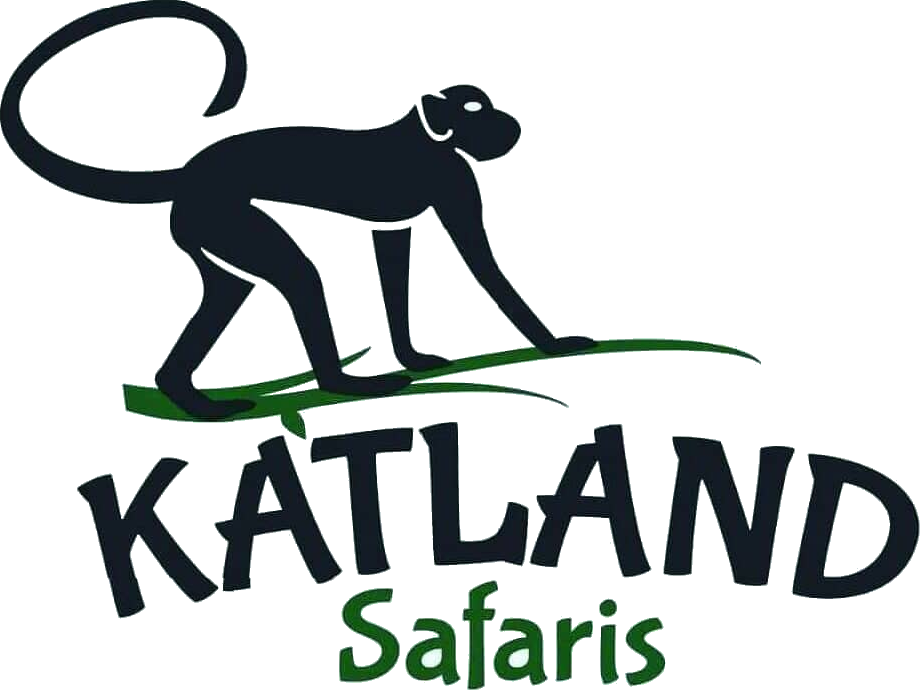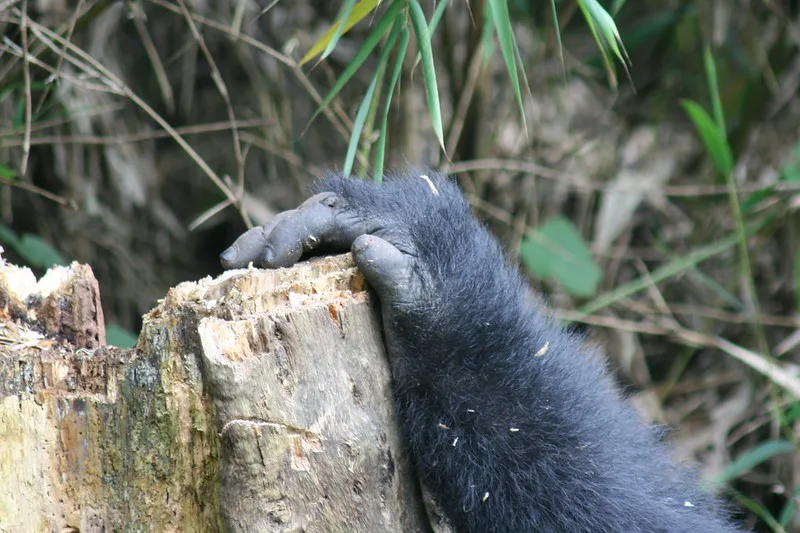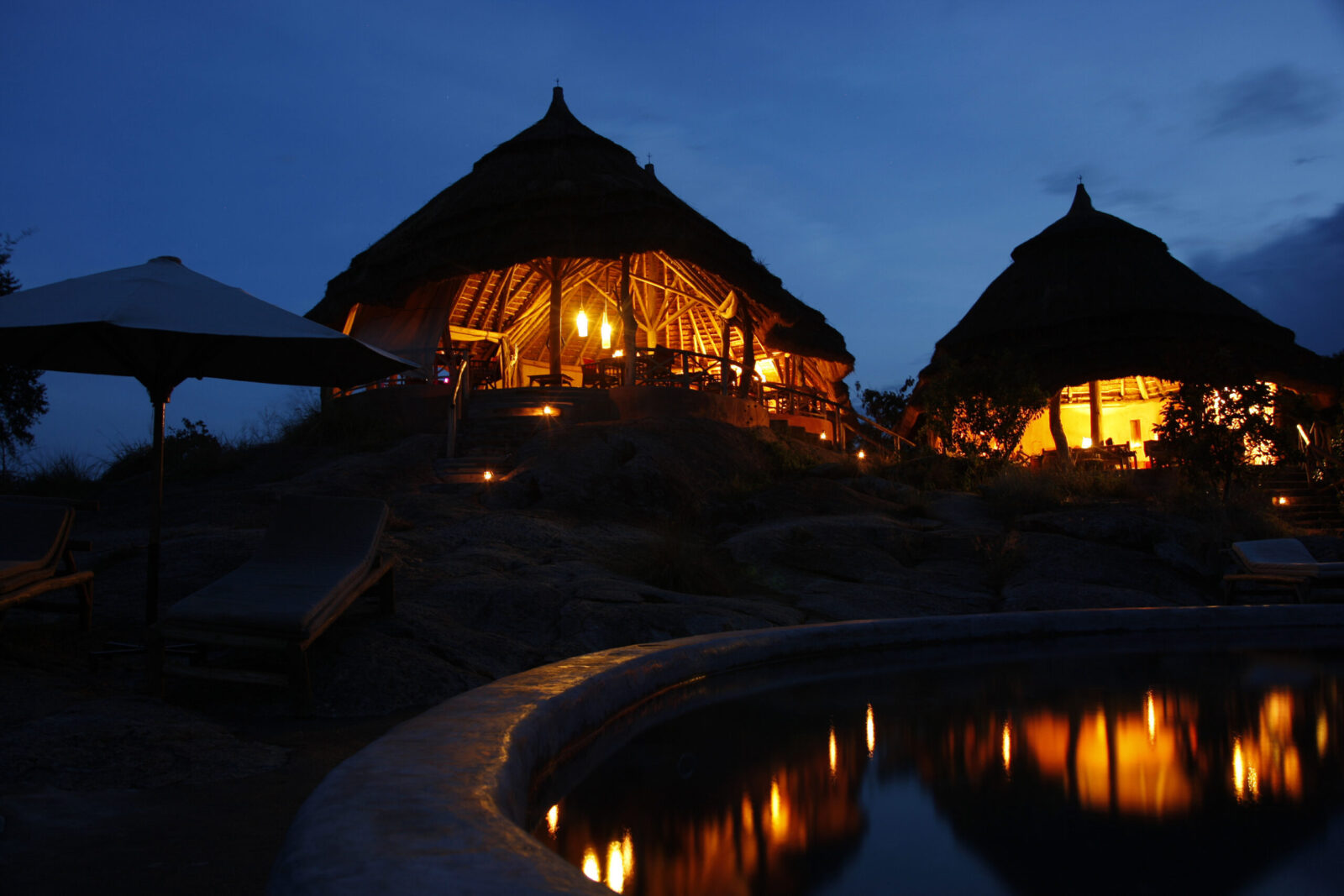About Gorilla tracking in Volcanoes National Park
Anyone visiting Rwanda for a safari or conference must make a stop at Volcanoes National Park, also known as Parc National Des Volcans in French. Here we will provide all the information you need about gorilla tracking in Volcanoes NP. The park is located in Musanze/Ruhengeri in the north of Rwanda and is believed to be the oldest forest on the African continent. Mgahinga National Park in Uganda and Virunga National Park in the Democratic Republic of the Congo are both a part of the Great Virunga Volcano Conservation Region; these two parks share the same forest but have distinct names due to their respective geographical locations.
Among the many birds and creatures that call the 160 km² Parc home are the gorillas and golden monkeys, for which the park is famed. The park, which borders both Uganda and the Democratic Republic of the Congo, is home to around 1800 gorillas—more than half of the world’s total—and is part of the biggest gorilla protection area, which also includes Virunga National Park in the Democratic Republic of the Congo, Mgahinga NP, and Bwindi Impenetrable National Park.
The park is home to a variety of primates and fauna, including the stunning golden monkeys—found nowhere else in East Africa except at Mgahinga National Park in Uganda. Buffalo, hyenas, elephants, duikers, and 178 different kinds of birds are among the other creatures. Those interested in visiting Volcanoes National Park may enjoy one-day trekking adventures at the park’s many fantastic volcanoes, which include Muhabura, Gahinga, Sabinyo, Karisimbi, and Bisoke, as well as bamboo forests, vent swamps, and Savannah grassland.
There are over 700 gorillas and 10 gorilla families that are habituated for luxury gorilla travel, making gorilla tracking the most renowned activity in the park and an appealing destination for tourists. The work of American biologist and environmentalist Dian Fossey is also well-known in the area. In 1967, she fled the dangers she faced in the Democratic Republic of the Congo and set up her research center in Karisimbi.
She stayed here, conducted extensive gorilla study, and was instrumental in the effort to save mountain gorillas from poachers who were bringing them into extinction by smuggling. After her murder in 1985, she remained here until her burial at the research center, which was held near to the grave of Digit, a beloved gorilla. If you are interested in seeing gorillas in their natural habitat, she recommends visiting the Susa Family, who reside on Mount Karisimbi. Because the Rwandan civil conflicts, which raged from the 1990s to 1999 and included the park, paralyzed the park’s tourism for a long time.
Finding the way there
From Kigali (Airport) or Gisenyi, you may take public transportation to the park in the nearby settlement of Musanze, which is also known as Ruhengeri. For those who would rather have their journeys planned by travel agencies, transportation to and from the park may be arranged in a 4×4.
Because it is just a two-hour drive from Kigali, it is feasible to drive straight there, see the gorillas, and then return for your flight home, as long as you get to the park before 7:00 am Rwandan time and arrange for your flight to leave at least after 6:00 pm.
While there aren’t any direct flights from Kigali to the park, you can still arrange for opulent cars equipped with air conditioning and a mobile fridge to keep your beverages cold on the go. Because the national carrier flies to so many different locations, visiting Rwanda no longer requires the hassle of connecting flights and many aircraft changes.
In addition, the park can be reached from Uganda, which is a great starting point for longer trips or if you happen to live there. The drive from Kampala takes around 9 to 10 hours, but it’s a beautiful one with plenty of photo ops along the way, including the Equator, the Igongo Cultural Centre, the Kigezi Hills, and the Cyanika Border. Many visitors come from nearby national parks, such as Bwindi Impenetrable, Lake Mburo, or Kibale and Queen Elizabeth, with the latter two accessible via Kabale, a two-hour drive away.
You have two alternatives for flights from Entebbe to Kisoro Airstrip: Areolink Uganda or Kampala Executive Aviation. The flight takes an hour, and then you may connect to Kigali by driving two tours in a 4×4 vehicle. If you’re the kind who gets antsy on lengthy car rides, this will cut down on the 10 hours you’ll spend driving.
Allowances for gorillas at Volcanoes National Park.
Like their Ugandan counterparts, the gorillas in Rwanda are acclimated to human presence and travel in groups with no more than eight observers each day. Eighty permits are issued daily. According to the regulations set down by the Rwanda Development Board, each gorilla family may only be monitored once.
The cost of the gorilla permit.
Volcanoes National Park has the most expensive gorilla permits at $1500 per person per trek; however, visitors to the other three Rwandan national parks can get their permits for $1500 per person per trek at a discounted rate of $1050.00 per person per trek, and conference attendees can get their permits for $1755.00 per person. In contrast to its neighbors, Uganda and the Democratic Republic of the Congo, who charge USD800.00 and USD400.00 per person, each trek, respectively, for their permits.
After you’ve confirmed that the dates you want to visit are available, all you have to do is get in touch with Katland Safaris, and we’ll take care of booking the permits.
Families of Mountain Gorillas in Volcanoes National Park
To keep the gorillas from becoming scared and attacking if there are too many people around, this is necessary. The ten gorilla families are as follows: Agashya, Sabyinyo, Karisimbi, Umubano, Kwitonda, Hirwa, Bwenge, and Ugyenda. For the sake of gorilla study, one group is designated as Titus.
Apes of the Susa
The famed and historically significant Susa River passes through this region, giving rise to the name of this prominent group. This is a group that renowned naturalist Dian Fossy investigated from 1967 till her death in 1985. Located at a considerable elevation on Mount Karisimbi, this group is both the biggest and most elusive in Volcanoes National Park.
The pride takes great satisfaction in the fact that its current membership includes the impano and byishimo twins, as well as the remaining 28 gorillas and three silverbacks, from a total of 42 at habituation. This is the most elusive group because to the high altitudes at which they remain, although they may provide an exciting challenge to adventurers and hikers.
Primates of the Sabyinyo Forest
The gorillas in this group got their name from the nearby peak Sabinyo; both Rwanda and Uganda share this mountain range, but the gorillas themselves remain on Rwandan soil. Among the groups in the area around the park headquarters, this one is among the simplest to follow. Guhonda, the largest Silverback in the group, may reach a weight of about 220 kg, and he is preventing Ryango, its major rival, from joining them. With three adult females and three youngsters, it is one of the top groups for travelers to visit.
Homo karisimbiensis
The silverback Nyagakangaga is the head of this band, and the name derives from Mount Karisimbi, the current home of the band. Because to this group’s 3009 split, only around 26 of the original 42 Susa gorillas are still part of the Susa group. After forming a breakaway group with thirteen individuals, Nyagakangaga was once known as Susa B but changed its name to Karisimbi Gorilla Family in 2010. There are eleven people in the group at the moment: three mothers, four fathers, a black back, and two babies.
The Family of Amahoro Gorillas
![]() Two silverbacks, two blackbacks, five juveniles, five females, and four young gorillas make up the group of eighteen, with the dominant silverback being named Ubumwe, meaning unity. Peace is the meaning of the Rwandese name Amahoro, and anybody who has visited the family will attest to it. Those interested in seeing this group should be physically fit, since it is located on the slopes of Mount Visoke and involves a moderate hike.
Two silverbacks, two blackbacks, five juveniles, five females, and four young gorillas make up the group of eighteen, with the dominant silverback being named Ubumwe, meaning unity. Peace is the meaning of the Rwandese name Amahoro, and anybody who has visited the family will attest to it. Those interested in seeing this group should be physically fit, since it is located on the slopes of Mount Visoke and involves a moderate hike.
The Family of Umubono Gorillas
Ubumwe, whose name means “live together,” is the dominant silverback in this group of thirteen people, two of whom are silverbacks. Following Charles’s death, Ubumwe assumed leadership of this faction that had split off from the Amahoro.
Primates of the Agashya Family
Because there were 13 individuals who lived together as a family for a long period, this group was formerly called the 13 Group. At first, Nyakarima was in charge, but Agashya the Silverback eventually deposed him. The group’s size has increased to 25 individuals, including 1 silverback, 15 females, 3 juveniles, and 7 young gorillas, all because to improved conservation efforts. Typically, you may see the herd meandering along the Sabinyo and Mgahinga mountain ranges. Every time he detects danger, the fiercely protective Agashya orders his tribe to advance upward.
Gorilla Family Kwitonda
Research suggests that this gorilla population may have crossed into Rwanda in 3003 due to territorial disputes with other gorilla groups in the area or maybe a lack of food, since it ended up in Rwanda’s southern region. After displacing Kwitonda, the younger silverback, Akerevoru became leadership of the group and took the name of the dominant silverback at the time. After a postmortem examination confirmed that Kwitonda had died of natural causes in 2015, his body was discovered ten days after he had escaped from the gang. Roughly twenty-three people make to the group.
Family of Hirwa Gorillas
With one silverback and sixteen members, this is one of the newest groups to emerge from the merging of the Sabinyo and Group 13 families. You may find the group nestled between Sabinyo Mountain and Mgahinga. The Hirwa family is one of the rare ones to get twins; the name means “Lucky One” in Japanese.
The Family of Bwenge Gorillas
For those seeking a more manageable trip, or if you are an old person, this is the best group to join; there are eleven of them and they congregate in the Visoke parts of the mountain. Silverback Bwenge, who had separated from his old pack, is now the leader of this new group that includes two females. The sudden deaths of six of his infants cast a shadow on the group. As far as hiking groups go, this one is simple, too.
The Family of Ugyende Gorillas
There are eleven individuals total, including one silverback, in this group. Their name, Ugyenda, means “on the move,” and that’s exactly what these nomadic people do—live and travel about the Mount Bisoke region. Because it is located high on the slopes of Mount Bisoke, this group offers a somewhat more challenging hike.
Titus and the Gorillas
The lineage of the group can be traced back to silverback Titus, who was born during the time that Dian Fossey was conducting her research at Karisoke Research Center. As the lone survivor of his family, he endured numerous hardships, including being taken in by another family at a young age. Eventually, he matured into a dominant silverback and formed his own group with other males, including Beetsme, and five females, who are now known as Titus’s descendants.
At the age of 35, Titus passed suddenly. He had 20 children, but they continued drifting apart as he got older. From Titus’s poor beginnings to the group’s current success, this is the most inspiring tale in Volcanoes National Park. If there is a scarcity of permissions or if there is an allowed special request, the group may be accessed for tracking reasons, but it is reserved for research purposes only.
Policies and Procedures for Gorilla Trekking
Following the acquisition of gorilla licenses, there are several requirements that must be followed by anybody interested in gorilla tracking in Rwanda. These regulations are as follows:
One more thing to remember before you begin gorilla tracking:
The gorillas are followed in groups of eight people each day, with the goal of minimizing human disturbance and the danger of human-borne infections. This is done to ensure the safety of the gorillas.
People who want to go gorilla tracking should make sure they’re well before they go. Since gorillas share so much DNA with humans, they’re more likely to get dangerous illnesses like the flu or a cough.
Verify that you are in possession of your identity papers and gorilla permission.
Gorilla tracking requires you to wash your hands first.
Tourists’ Guide to Gorilla Tracking in Uganda
To ensure the well-being of mountain gorillas, a set of regulations and standards has been meticulously crafted. In addition to being very vulnerable to human illnesses and viruses, gorillas may experience stress when there are an excessive number of visitors or if they are approached too near.
Keep in mind that these are wild creatures who will go to great lengths to safeguard their offspring. The health and survival of these apes depend on their being able to eat, sleep, and interact with members of their own species without interference from humans.
First and foremost, visitors who are sick should get well before going gorilla tracking; otherwise, park employees have the right to refuse entry to anybody they suspect is carrying a sickness that might infect the primates.
There is a daily limit of eight visits per gorilla group, and no two visitors from the same gorilla group may be monitored at the same time. This is to prevent the gorillas from becoming too excited and aggressive, which might lead to their attacking humans.
Anybody who is physically and mentally competent of making the walk may undertake gorilla tracking if they are fifteen years old or older. A lot of kids are startled quickly and could act out if they encounter gorillas, which is discouraging because of all the childhood ailments.
No one may spend more than an hour in close proximity to the gorillas at any one time. This is due to behavioral, stress, and infection concerns, since gorillas are not able to be restrained to remain within the prescribed 7 meters.
Photography is permitted, however flash photography is prohibited. This is because it has the potential to shock or disturb the gorillas, which might lead them to become aggressive towards people.
Observers are asked to maintain a distance of seven meters from the gorillas. In the event that the gorillas approach closer, as is common with young and immature gorillas, they are urged to step back at least five meters. If you are unable to relocate, the rangers and wildlife personnel will provide you with instructions on what to do next.
The seventh rule is that visitors should keep to themselves so the gorillas may eat freely. In an attempt to defend their area, gorillas may attack at you if they see you dispersed about.
Gorillas, especially silverbacks, feel scared when you stand too near and are taller than them. Additionally, infant gorillas are readily enticed by people who are standing, so it’s best to sit or be on the porch if you observe gorillas.
Visitors should not point, lift their hands or arms, or stare at them because body language is crucial. Because gorillas rely so heavily on nonverbal cues, you can never be sure of the meaning of a sign or gesture you make.
The gorillas may be scared and feel threatened if you cut vegetation near to them, therefore it’s best not to do so . When cleaning sight vision, guides will give you their best advice on how to achieve so.
The guides will give you instructions on what to do if a silverback shows symptoms of charging at you, so don’t run away. They may use this to gauge your response or to determine whether you pose a danger.
You are not allowed to eat, drink, or smoke within 300 meters of the gorillas. This is because these activities may be disruptive and even harmful to the gorillas. Advice on where to eat will be given to those who have parked their lunches.
All guests must maintain the utmost silence and use the whispering technique. Keep quiet if stinging nettles or Safari ants bite you. Keep your distance from gorillas if you scare them. You may study them even more closely if you remain silent.
When someone is sneezing or coughing, they should turn away from the person and cover their mouth and nose. Because of this, the gorillas are less likely to get airborne infections that might be deadly if they unknowingly came into contact with them.
The burial of all falcal items is required under Rule 15. It is possible to borrow a machete from the guides, dig a hole 30 cm deep, and then fill it. These are very contagious and may spread illness to many wild animals, including gorillas.
Clean up after yourself; don’t leave trash lying about the park; instead, put it in your pockets or bags and dispose of it when you leave the Forest. When animals consume them, not only do they cause damage, but they also degrade things in the ecosystem.



